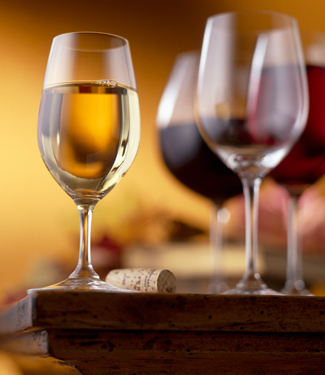On the spacious patio at Huaca Pucllana, an upscale restaurant in Lima’s Miraflores neighborhood, a young waiter is walking an American couple through the restaurant’s extensive wine list. The waiter, armed with an impressive knowledge of wine, offers them a taste of a Peruvian Sauvignon Blanc. One sip and the couple are sold.
A by-product of Peru’s recent culinary renaissance is a growing local interest in wine, both for production and consumption.
“We have two distinct crowds here at Central,” says Gregg Smith, wine program director at the wildly popular Lima restaurant owned by Virgilio Martinez. “Affluent Peruvians with more disposable income, and American and European tourists. The tourists want to try South American wines, and the Peruvians are realizing that there’s more out there besides Argentinean and Chilean wines.”
As Peruvian consumers discover wine, Peruvian winemakers are gaining recognition for their products outside of Latin America. “Although production is relatively small, Peru wants its finer wines to compete on the international market,” says biologist Jorge Llanos Goyena, professor of enology at Le Cordon Bleu Perú. He notes that Santiago Queirolo Winery’s Intipalka label recently garnered awards at Germany’s ProWein trade expo. It’s also one of the few Peruvian wines exported to the U.S., Europe and China. Ocucaje, another top producer, earned a silver medal for its Cabernet Sauvignon at the 2012 Vinalies Internationales in France.
Five of Peru’s top bodegas, or wineries, date back to the late 1800s, but Peru’s winemaking legacy began in the 1500s following the Spanish conquest. Peru was the first South American country in which systematic viticulture was actively encouraged, and vines were planted in coastal areas with the majority around Ica, a region just south of Lima. Over the years, pests and politics reduced the country’s vineyards from 125,000 acres in the 19th century to little more than 2,500 acres by the 1980s. But as Llanos Goyena notes, once economic stability returned to Peru in the early 2000s, so did a renewed interest in winemaking.
Next, a look at Peru’s top wineries…
[ pagebreak ]Today, Santiago Queirolo, Tabernero, Tacama, Vista Alegre and Ocucaje wineries are considered Peru’s top producers, according to Llanos Goyena. All are based in Ica, which remains the heart of Peru’s wine industry. With its dry, desert climate, sandy soil and natural irrigation from the Andes, Ica boasts favorable conditions for growing grapes.
“Peruvian wineries also are employing modern technology to make world-class wines,” says Llanos Goyena. Santiago Quierolo uses temperature-controlled stainless steel tanks, while Tabernero has automated its bottling line and has invested in Italian grape presses and destemming machines. Tacama and Vista Alegre have brought in winemaking consultants from Europe and Argentina.
As for the wine grapes themselves, international varieties such as Sauvignon Blanc, Chardonnay, Muscat, Cabernet Sauvignon and Syrah are being cultivated, along with more regional grapes such as Quebranta, used in some Piscos.
Although wine tourism on the level of California or France has yet to arrive in Peru, more and more tour operators are offering wine-focused tours to the Ica region, with stops at various wineries. Independent travelers can take a bus or car and drive four hours south of Lima to explore some of the wineries on their own. And there’s a good chance they’ll be swirling and sipping along with locals.
Large-scale wine tasting events in Lima are attracting young wine aficionados, says Smith. One such event, Expo Vino, is sponsored by a Peruvian grocery store chain and draws thousands over a period of three days.
“In Lima, the younger crowd is beginning to understand that wine is an important part of a nice meal,” Smith notes. Adds Llanos Goyena, “Wine in Peru has become democratized. It’s available to all palates.”


![Making Mealtime Matter with La Familia: Easy Sofrito [Video]](https://thelatinkitchen.com/wp-content/uploads/2015/10/sofrito-shutterstock__0-500x383.jpg)
![Easy Latin Smoothies: Goji Berry Smoothie [Video]](https://thelatinkitchen.com/wp-content/uploads/2015/12/goji_berry-shutterstock_-500x383.jpg)
















![Fun and Fast Recipes: Fiesta Cabbage Salad [Video]](https://thelatinkitchen.com/wp-content/uploads/2015/11/fiesta_cabbage_slaw-shutterstock_-500x383.jpg)









